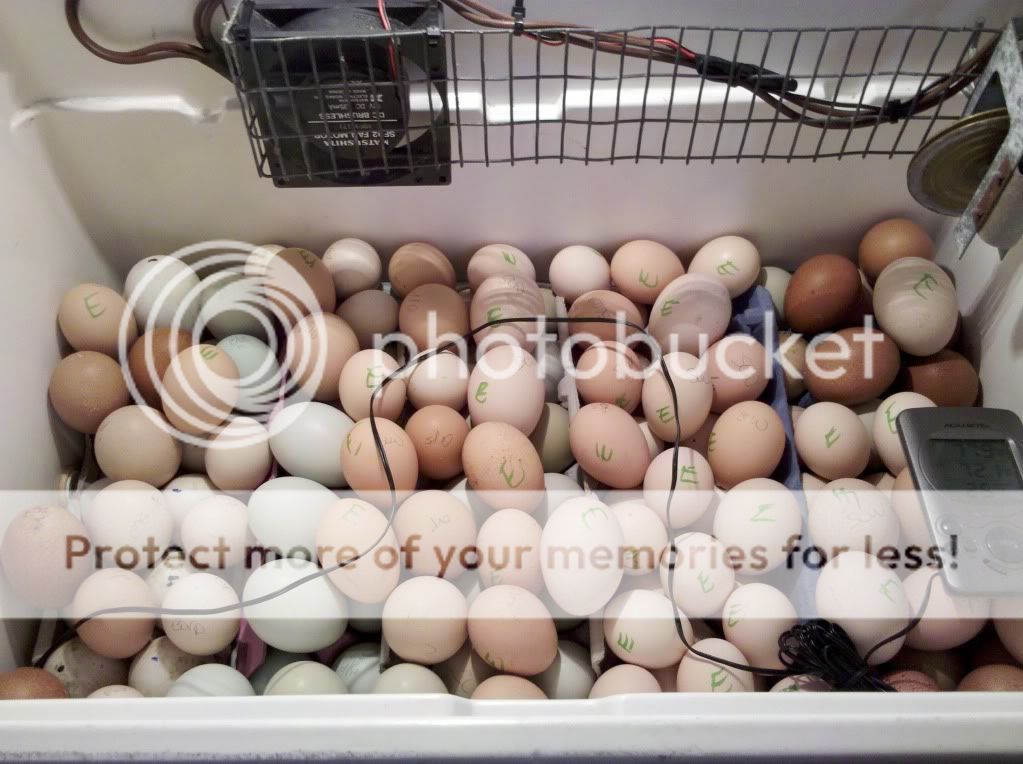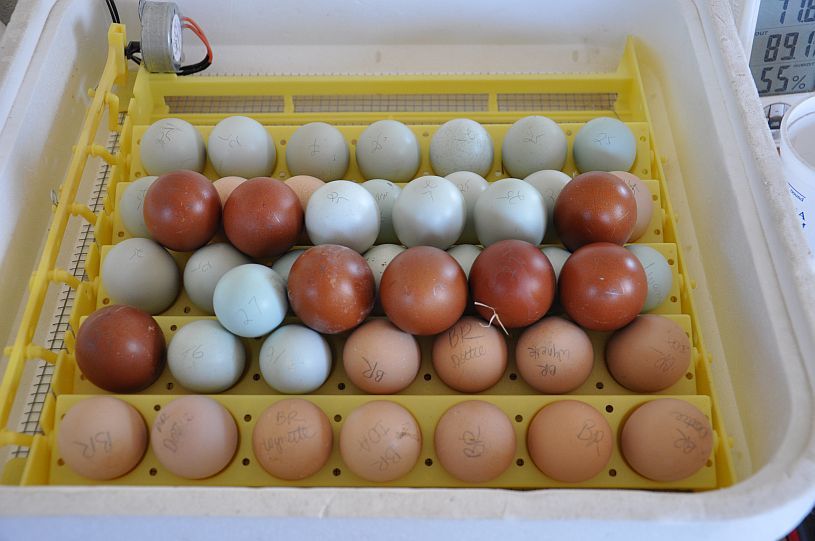Ah, man, I have to decide which eggs to remove from the collection. My turner holds 42 and I have 45. Decisions, decisions. Guess I could put extras on the side and hand turn until first candling when I'm sure I'll be removing a few. Hmm.
LH, are you sure you want more politicians in the world? I have two June eggs and three Maretta eggs. I really want Maretta's in there after Wynette hatched a couple of blue pea combed chicks from hers-you know how I love my blue chickens! They'll be blue barred if they come out blue, like my Riley.
BTW, there are 5 of Shadow's in there and 13 D'Anvers. I think I need only 3 D'Anver pullets out of them because my main goal are porcelains eventually. Don't want to overcrowd the coop.
Are you kidding me? Have you ever heard of double decker? Im the Queen of Double Decker eggs. Hens do it, why can't we?









